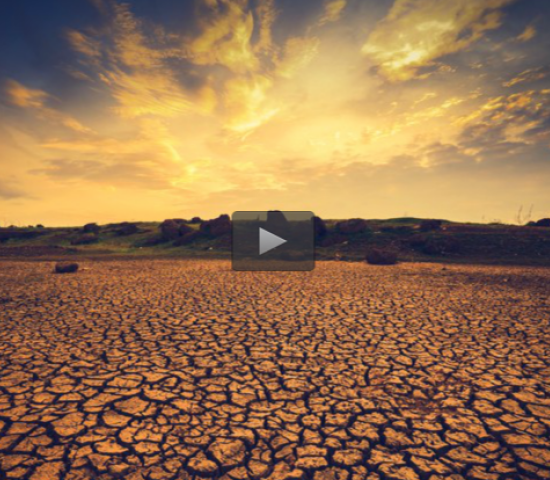
Free Online Course Provides Big-Picture Overview of Drought in America and Actions Individuals Can Take to Conserve Water
WASHINGTON DC – This week NEEF launched a free online course devoted to helping the American public understand the science of drought and its impacts, today and in the future. To help the public respond, the course also provides actionable steps individuals can take to reduce their water usage.
"Americans are increasingly taking note of changing environmental conditions, yet many are unprepared for the impacts," said Sara Espinoza, NEEF's Managing Director of Research and Best Practices. "We want to connect the public with science-based information about drought that will help them understand their risk and connect with the right resources and tools to make sure they are prepared."
The online course, Dealing with Drought, was created by NEEF with a grant from Udemy's Social Innovation program, which supports nonprofits pursuing positive social change by awarding course creation grants. The course is hosted on the Udemy online learning platform.
"While everyone has heard about the drought in California, people may not know that more than 70% of the western United States is currently experiencing abnormally dry or drought conditions," said Espinoza. "For many areas in the West, drought conditions are expected to persist or intensify over the next few months," she added.
As of August 26, the U.S. Department of Agriculture had declared disaster areas in 12 states due to drought: Arizona, California, Colorado, Idaho, Montana, Nebraska, Nevada, New Mexico, Oklahoma, Oregon, Texas and Utah. California, which serves as a case study throughout the course, is facing one of its most severe droughts on record, and Governor Brown ordered mandatory statewide water reductions for the first time in state history.
"Droughts are among the most expensive natural disasters, harming agriculture, the economy and human health, and creating the perfect conditions for wildfires," Espinoza continued. "The conditions Western states are experiencing today may be a taste of the 'new normal.'"
By the end of this century, scientists expect droughts to intensify and increase in length and frequency in many regions of the United States, particularly in the central, southern and northwestern parts of the country. The intensified drought conditions projected under climate change will present challenges for the management of reservoirs, aquifers, and other water infrastructure.
The public is invited to watch the course videos, which discuss the different types of drought, provide a historical perspective on drought in the U.S., and look at projected drought trends under climate change. The course also covers the health, financial, social and environmental impacts of drought and shares practical information and tips about how to reduce water use by both changing behavior and creating a more water-efficient home and landscape.
The course draws on the expertise of trusted agencies and organizations, including NOAA's National Weather Service and Climate.gov, the U.S. Environmental Protection Agency's WaterSense program, the National Drought Mitigation Center, and NASA's Goddard Institute for Space Studies.
Upon release of the course, Meg Evans, Manager of Social Innovation at Udemy commented, "NEEF's drought course is a powerful example of an organization utilizing the Udemy Social Innovation program to extend their reach and educate people on important, timely topics around the world. We fully support NEEF's efforts in advancing environmental literacy and are delighted to see this second course come to life on Udemy."
The Dealing with Drought course can be found at:https://www.udemy.com/dealing-with-drought/